Week 5 - COLD SOUPS
- Chang Pinky
- Feb 3, 2023
- 8 min read
Updated: Feb 11, 2023
List the method of cookery and dishes to be covered in class
This week we are going to learn about making gazpacho, tomato sauce, pasta carbonara, and stir fry asparagus.
List your learning objectives for the class
Gazpacho: Be able to learn about traditional Spanish cuisine and the ingredients used in making a cold soup as well as understand the steps in blending and seasoning the soup to achieve the desired flavor and texture.
Tomato sauce: We will learn about the basics of sauce making and understand the importance of cooking down the ingredients to create a rich and flavorful sauce. Also, we will gain experience in adjusting the seasoning to taste.
Pasta Carbonara: Be able to learn how to make a classic Italian pasta dish and understand the technique of using eggs and cheese to create a creamy sauce. Additionally, we are going to have experience in cooking pasta al dente and understand the importance of timing the dish to ensure everything comes together perfectly.
Stir-fried asparagus: We can learn about stir-frying and understand the technique of quickly cooking vegetables to retain their texture and flavor. We will also know how to season stir-fried dishes and understand the importance of using high heat to achieve a caramelized and nutty flavor.
Discuss your prior knowledge of the content
As a person with a huge passion for cooking, I have had the opportunity to try my hand at a variety of dishes, including spaghetti bolognese, which is quite similar to pasta carbonara. So that I may also acquire the knowledge of making a tomato sauce to mix into the pasta. I have also had experience stir-frying asparagus a few times, as it is a great addition to a hearty beef steak dinner. However, one dish that I am particularly looking forward to learning about is gazpacho. This cold Spanish soup is a refreshing summertime staple, but I have never made it before. I am eager to learn about the traditional ingredients and techniques used to make this dish, as well as to gain hands-on experience in blending and seasoning the soup to achieve the perfect flavor and texture.
Background Information
Research and discussion of method of cooking
The cooking methods for gazpacho, tomato sauce, pasta carbonara, and stir-fried asparagus are each unique and straightforward. Gazpacho is made by blending and chilling fresh ingredients such as tomatoes, cucumber, bread, and seasonings to create a refreshing cold soup. Tomato sauce is cooked by simmering diced tomatoes, garlic, and seasonings in a saucepan. Pasta carbonara is made by cooking bacon or pancetta, whisking eggs and grated cheese, and tossing it with cooked pasta. Stir-frying asparagus involves quickly cooking the vegetable in a hot pan with oil until tender. These dishes are classic and delicious examples of various cooking techniques, and mastering them can greatly expand our culinary skills.
Research and discussion of dishes
For historical dishes
According to kitchenproject.com, Gazpacho is a traditional cold soup that originated in the Andalusia region of southern Spain. It is believed to have originated as a simple dish made with leftover bread, garlic, oil, and vinegar, and was served as a refreshing soup to laborers in the fields during hot weather. Over time, the ingredients evolved to include fresh vegetables such as ripe tomatoes, cucumber, and bell peppers, and gazpacho became a staple dish in Spanish cuisine. The dish is now enjoyed throughout the world, particularly in warm weather, for its refreshing, light flavor and its simplicity of preparation. Gazpacho continues to be a popular dish in Spain and is often served as a first course in traditional Spanish meals.
Referring to lacucinaitaliana.com, pasta carbonara is a classic Italian pasta dish that is believed to have originated in the Lazio region of Italy. The dish is made with spaghetti or another long pasta, pancetta or bacon, eggs, grated cheese, black pepper, and olive oil. The origins of the dish are somewhat controversial, with some claiming it was created by coal miners in the Lazio region, and others suggesting it was created for American soldiers during World War II. Regardless of its exact origin, pasta carbonara has become a beloved dish in Italian cuisine, known for its creamy, decadent flavor and simplicity.
For cooking methods
According to simplyrecipes.com, Gazpacho is typically made by blending fresh vegetables such as ripe tomatoes, cucumber, bell peppers, bread, garlic, and vinegar with olive oil to create a smooth and refreshing soup. The soup is then chilled in the refrigerator before being served, usually garnished with diced vegetables or croutons.
Tomato sauce is made by cooking diced tomatoes, onions, garlic, and herbs such as basil and oregano in olive oil until they are soft and fragrant. The mixture is then blended until smooth and seasoned with salt, pepper, and other spices as desired.
Pasta carbonara is a simple but delicious dish made by cooking spaghetti or another long pasta according to package instructions and then tossing it with a mixture of pancetta or bacon, eggs, grated cheese, black pepper, and olive oil. The dish is then finished with additional cheese and pepper before being served.
Stir fry asparagus is made by quickly sautéing sliced asparagus in a hot pan with oil and seasonings such as garlic and soy sauce. The asparagus is cooked until tender but still crisp and served as a side dish or as part of a main course.
Dish/method variations
Gazpacho has many variations depending on the region and personal preferences. Some common variations include adding ingredients such as red bell peppers, cucumbers, green bell peppers, and onions to the traditional tomato base. Other variations include adding bread crumbs, almonds, or sherry vinegar to the mixture for additional flavor and texture. Some recipes also call for the addition of fruits like watermelon or strawberries for a sweeter twist.
Pasta carbonara also has several variations, including the use of different types of cheese such as pecorino romano or parmesan, and the addition of ingredients like heavy cream, white wine, or prosciutto to the traditional recipe. Other variations include using a different type of pasta such as fettuccine or spaghetti, and substituting pancetta with bacon or ham. Some recipes also call for the addition of peas, mushrooms, or other vegetables to the dish. The variations of pasta carbonara are limited only by one's imagination and culinary creativity.
Recipes
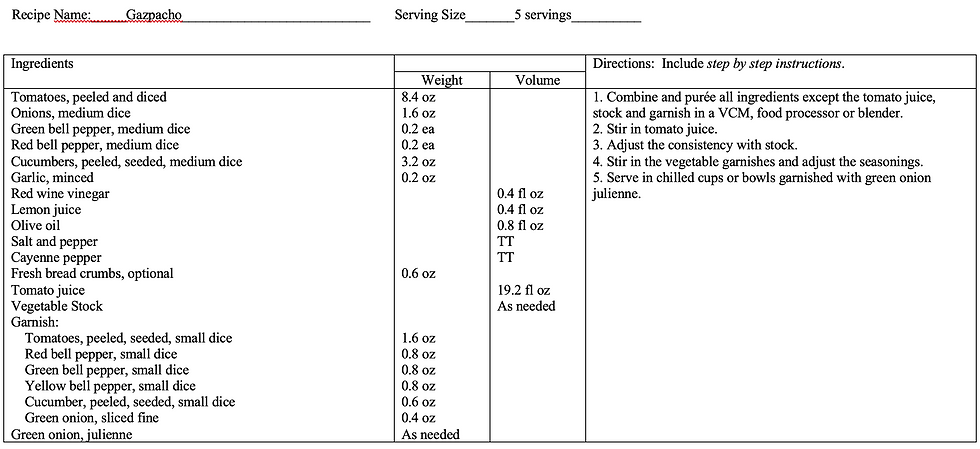
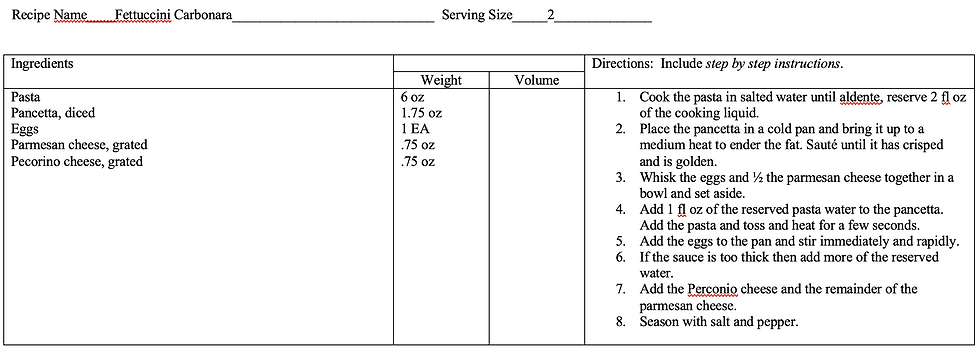
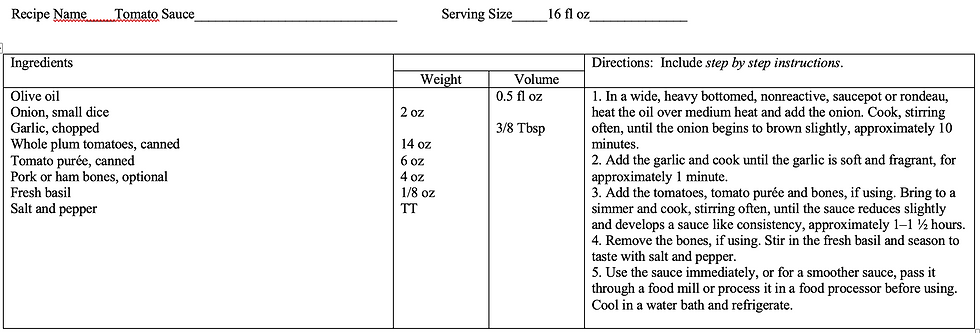

Plan of Work
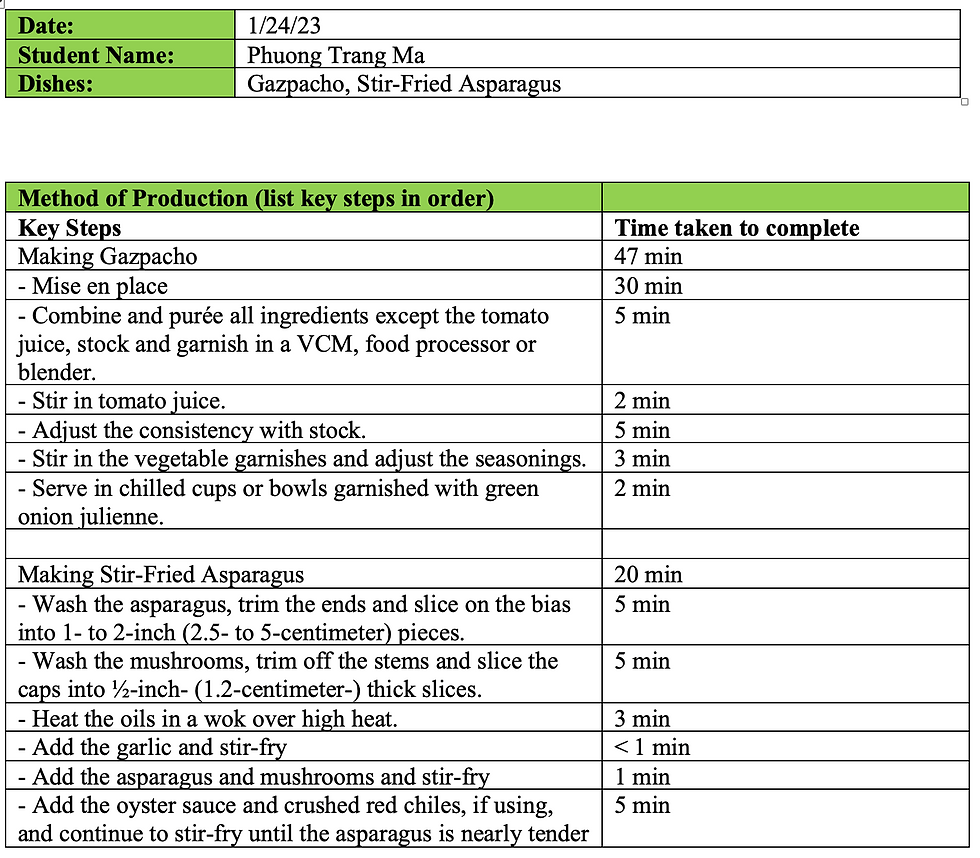
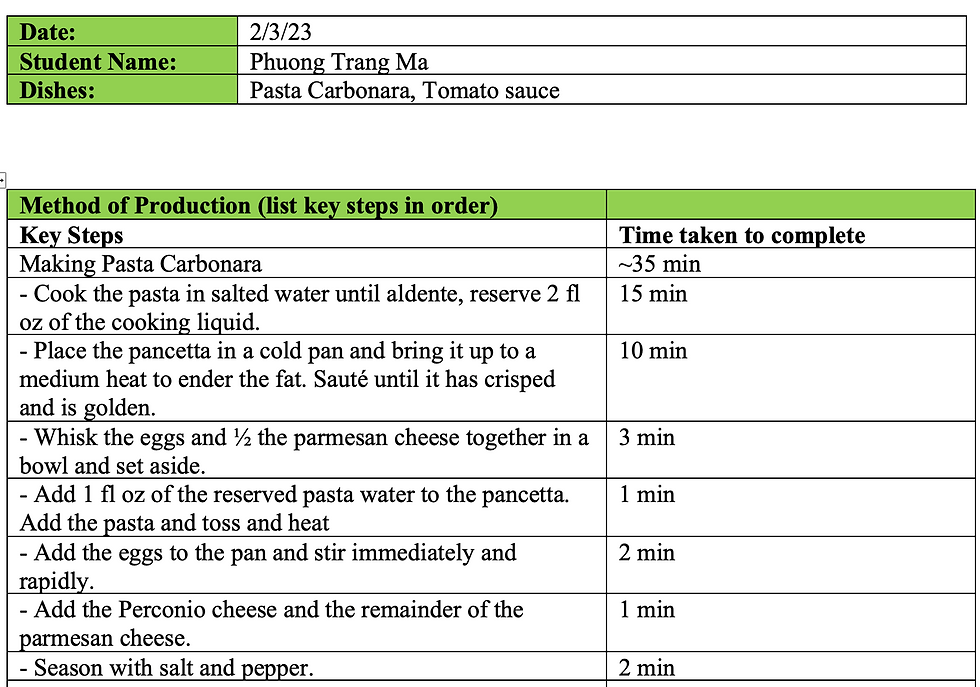

Result
Describe how well the technique/cooking method worked
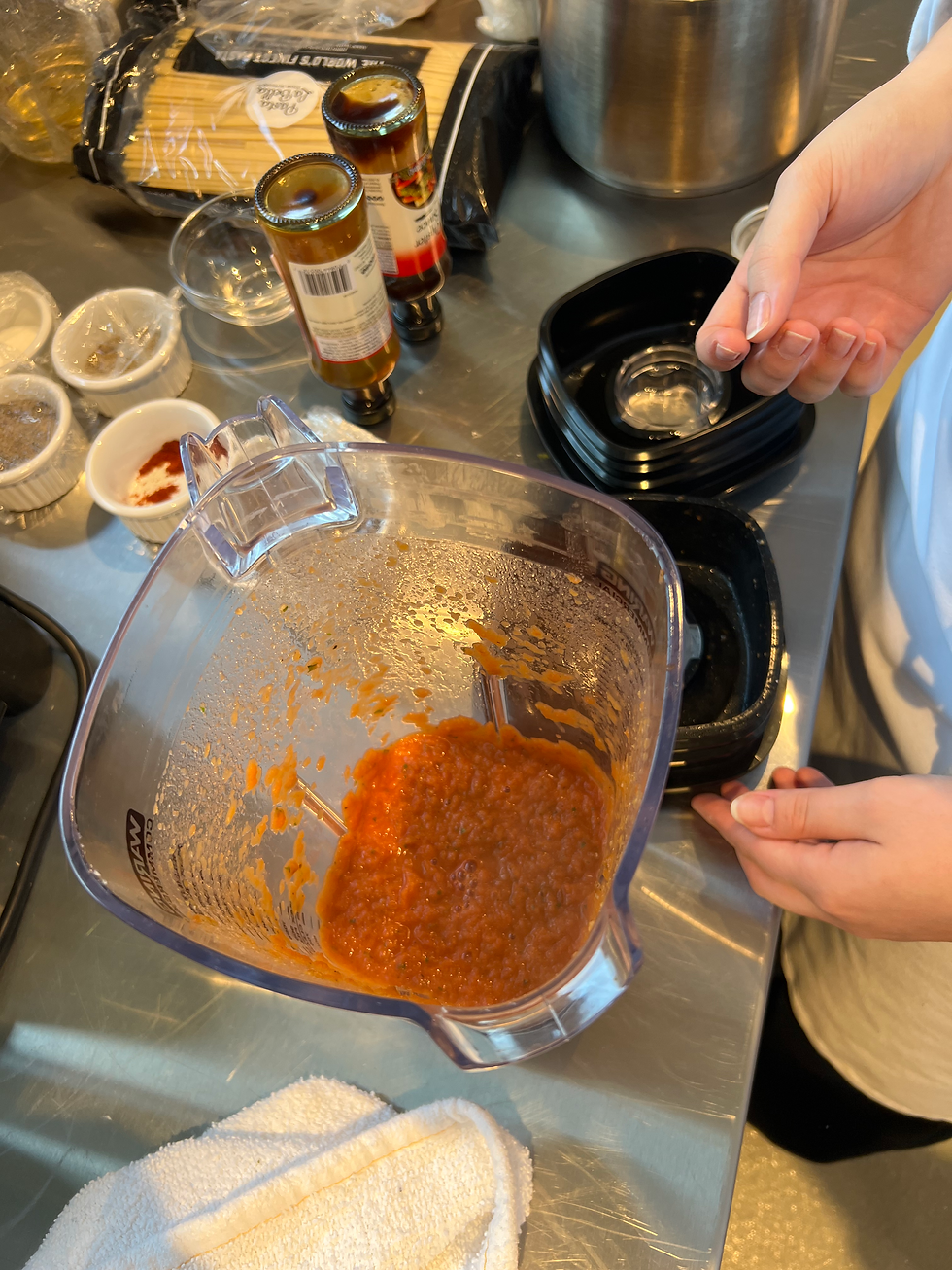
All four dishes were prepared using different techniques. Gazpacho was a straightforward dish, we simply blended together all the ingredients in the recipes including vegetable stock, seasoned with salt and pepper, and served chilled with a beautiful orange-pink color. The flavor was a mix of sour tomato juice and diced tomatoes, with the added flavors of cucumber, bell pepper, and red onion from the garnish.
Fettuccine carbonara was cooked differently, beginning with the frying of pancetta until golden brown and releasing its grease. The creamy sauce was made from a mixture of egg yolks and cheese, with care taken to boil the fettuccine al dente and mix it well with the sauce, ensuring that the pasta absorbed the seasoning evenly and the eggs were fully cooked. The end result was a creamy and tasty pasta dish with crispy pancetta.

The tomato sauce was made using multiple techniques including stirring, simmering, and deglazing, resulting in a typical tomato sauce appearance and the delicious aroma of basil.
Stir fry asparagus was another new cooking method we have learned, with the dish stir fried in a wok along with mushrooms and seasoned with oyster sauce. The result was a delicious combination of sweetness from the oyster sauce and slight saltiness, with the asparagus cooked to a perfect texture.
Describe the sensory results of the dish
Taste: Gazpacho has a fresh, crisp, and tangy taste, with a balance of sweetness from the vegetables and a bit of bite from the vinegar, which gives the soup a slightly sour and salty taste. Fettuccine carbonara has a rich, savory flavor, with the salty, smoky taste of pancetta and the creaminess of the eggs and cheese. The black pepper adds a touch of heat and the garlic provides a subtle depth of flavor.Stir fry asparagus combines the crisp-tender texture and slightly sweet, earthy flavor of the asparagus and mushrooms with the savory and slightly sweet taste of the oyster sauce.
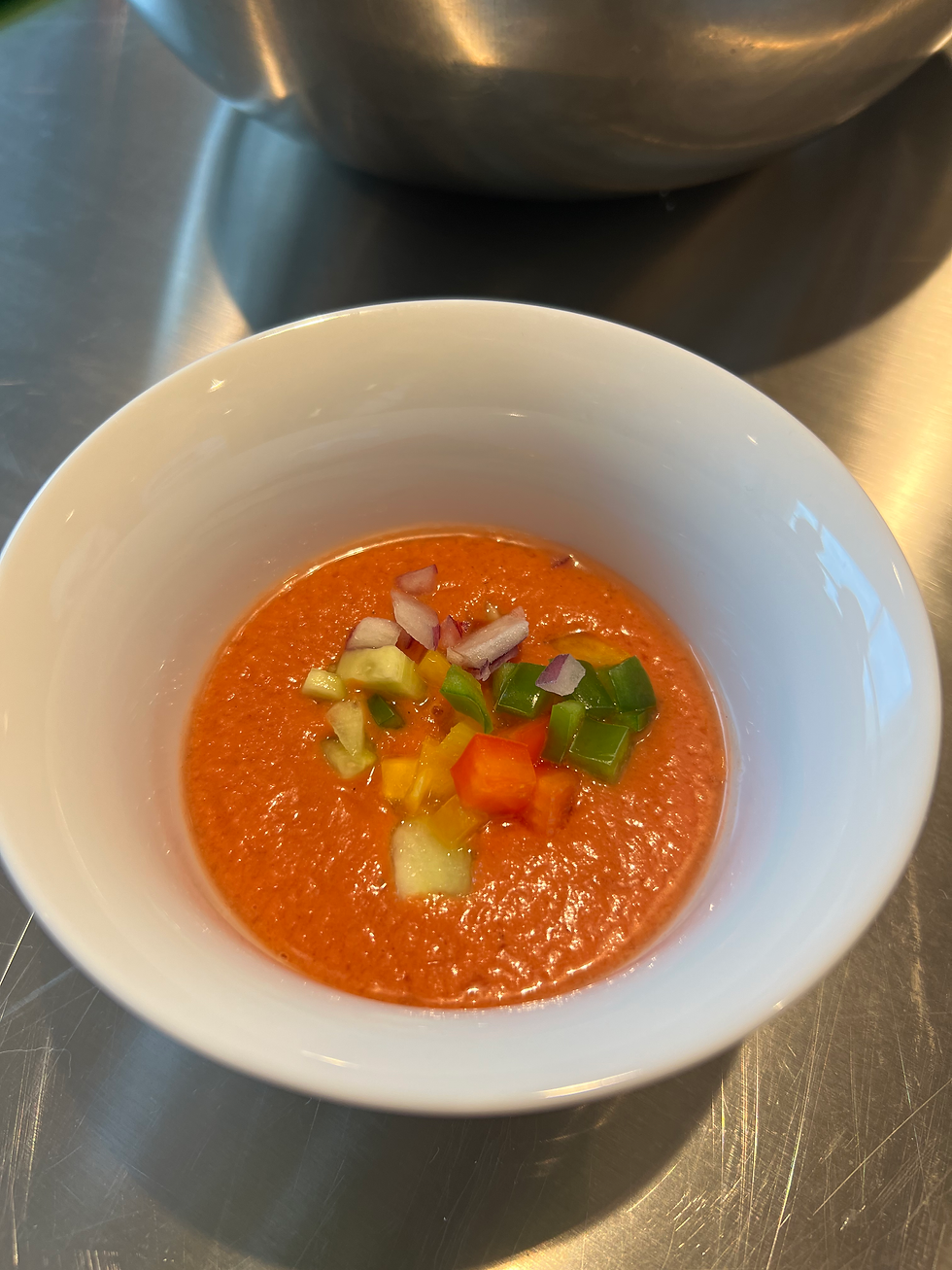
Flavor: The flavor of gazpacho is a harmonious balance of fresh, crisp, and tangy notes. It has a bright, herbaceous aroma that is invigorating and refreshing. The scent of the tomatoes and cucumbers is sweet and crisp, while the garlic and peppers add a touch of pungency. Fettuccine carbonara's savory flavors come from pancetta, which adds a salty and smoky taste, as well as the eggs, cheese, and black pepper, which create a creamy and slightly tangy sauce. The garlic provides a subtle depth of flavor, adding a slightly sweet note to the dish. In terms of aroma, fettuccine carbonara has a warm, rich, and slightly smoky scent, with hints of garlic and the buttery richness of the cheese. Stir fry asparagus and mushroom with oyster sauce is a flavorful and satisfying dish, with a balance of sweet, savory, and slightly pungent flavors and a warm, comforting aroma.
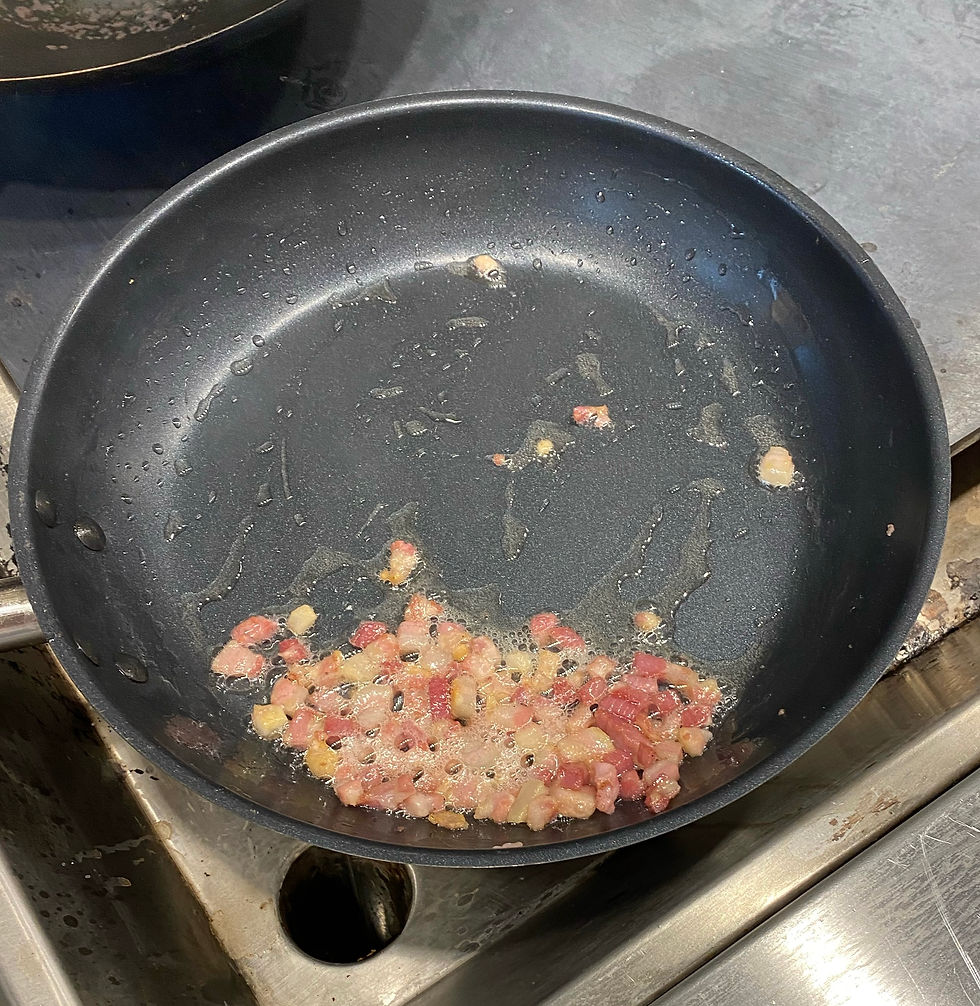
Texture: The texture of gazpacho is smooth and velvety, with a slightly chunky consistency due to the presence of small pieces of vegetables and bread. Fettuccine carbonara has a creamy texture, with a smooth and silky mouthfeel. The eggs and cheese create a creamy sauce, making the dish very rich and satisfying; while the pancetta adds a slightly crisp and chewy texture. Stir fry asparagus is a dish with a crisp-tender texture. The sauce, made from oyster sauce, garlic, and other seasonings, is smooth and slightly sticky, providing a contrast to the crunchy vegetables.
Appearance: Gazpacho has a bright, vibrant appearance. It is bright red, due to the large amount of tomatoes and then garnished with diced vegetables, such as cucumber or red pepper, giving it a fresh and colorful look. Fettuccine carbonara has a creamy, golden appearance, with the fettuccine noodles coated in a rich and indulgent sauce. The dish is finished with a sprinkle of grated cheese and freshly ground black pepper, adding an extra layer of color and texture. Stir fry asparagus has a warm and inviting appearance, with bright green asparagus and dark mushrooms contrasting against a glossy, brown sauce.
Evaluation of results
Discuss the techniques that did work well

From the description, it appears that we executed the cooking techniques well for all four dishes. We know how to use a blender expertly to create a smooth gazpacho soup, with the right seasoning and resulting in a beautiful orange-pink color. The fettuccine carbonara was cooked with precision, with the pancetta being fried until golden brown and the sauce being a combination of egg yolk and cheese, ensuring a creamy and tasty outcome. The tomato sauce was made using various techniques and had the desired appearance and the basil aroma was a highlight. Finally, the stir fry asparagus was cooked using the wok, with the right seasoning and achieving the desired texture and flavor.
Discuss the techniques that did not work well

The only problem we had was the lack of ingredients, namely asparagus. Because there was not enough asparagus available, each group of us was only divided about 5 oz instead of 8 oz as in the recipes. However, we kept the same amount of other ingredients such as oyster sauce, vegetable oil, and sesame oil as the recipes, so our finished dish was a bit salty and a little oily.
Discuss the particular improvements and changes that could be implemented to improve the outcomes

To improve the outcome of the stir fry asparagus, one possible solution is to reduce the amount of oyster sauce and oils used to compensate for the lack of asparagus. This way, the dish will still have flavor but will not be overly salty or oily. Another option could be to use a different vegetable that has a similar texture to asparagus, like mushroom, to supplement the dish. Additionally, it might be useful to consider the possibility of having a backup plan for ingredients, such as having a list of substitute ingredients or being flexible with the recipes in case of ingredient shortages.
Conclusions
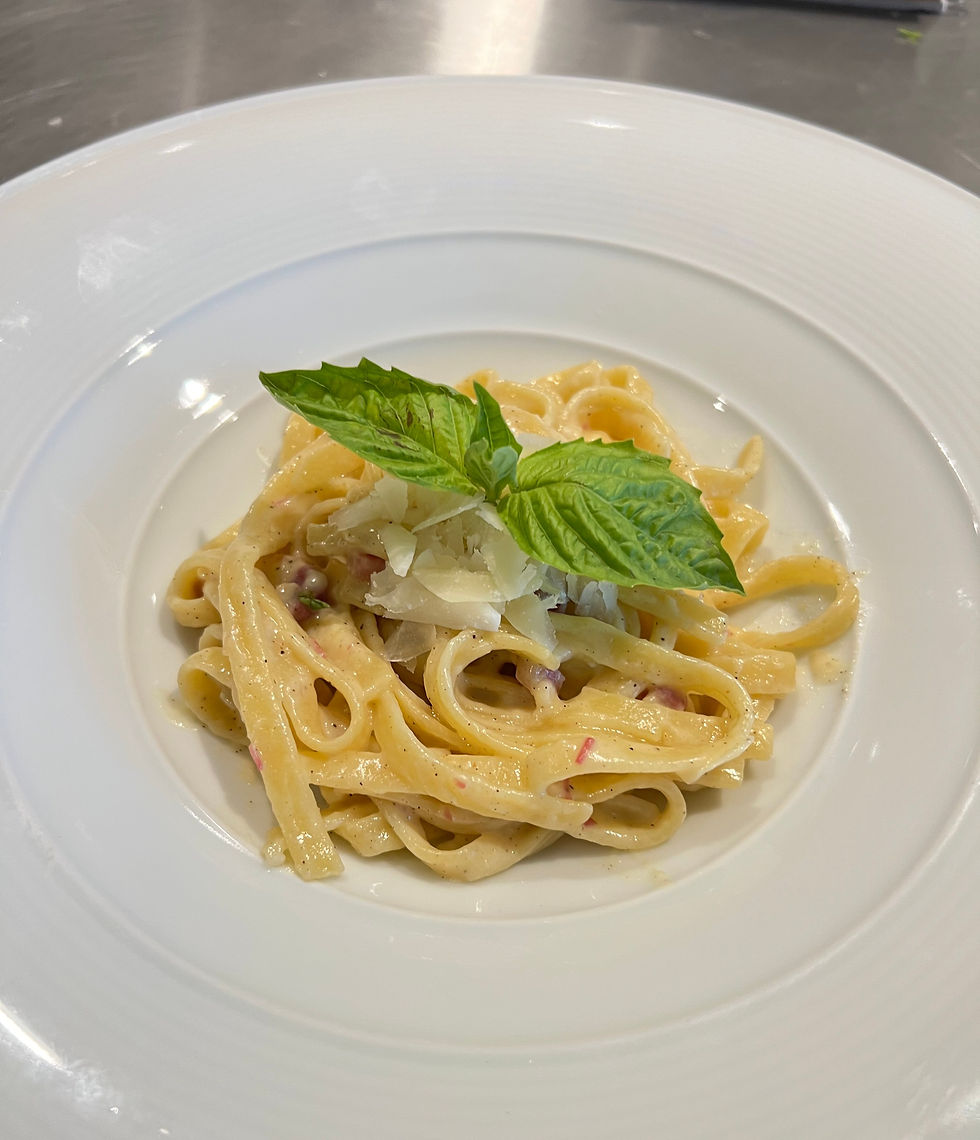
This week, we had the opportunity to learn how to make four new dishes: Gazpacho, tomato sauce, stir fry asparagus, and fettuccine carbonara. During this time, we picked up various cooking techniques, including stir-frying on a wok and boiling pasta. Our gazpacho turned out to be a fresh and cool dish with a tantalizing aroma. The fettuccine carbonara was a delicious combination of creamy cheese and eggs as well as crispy pancetta. Although our stir fry asparagus was not quite as successful this time, the combination of oyster sauce and shiitake mushrooms made it still a tasty dish. Lastly, we learned how to make the classic tomato sauce, which was filled with the flavor of basil and had a squishy texture.




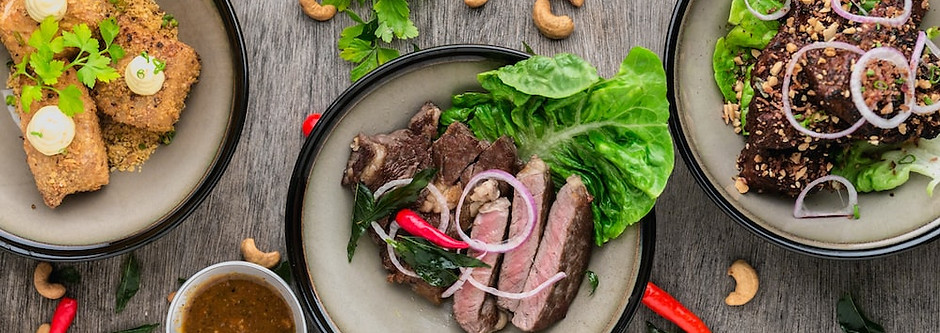
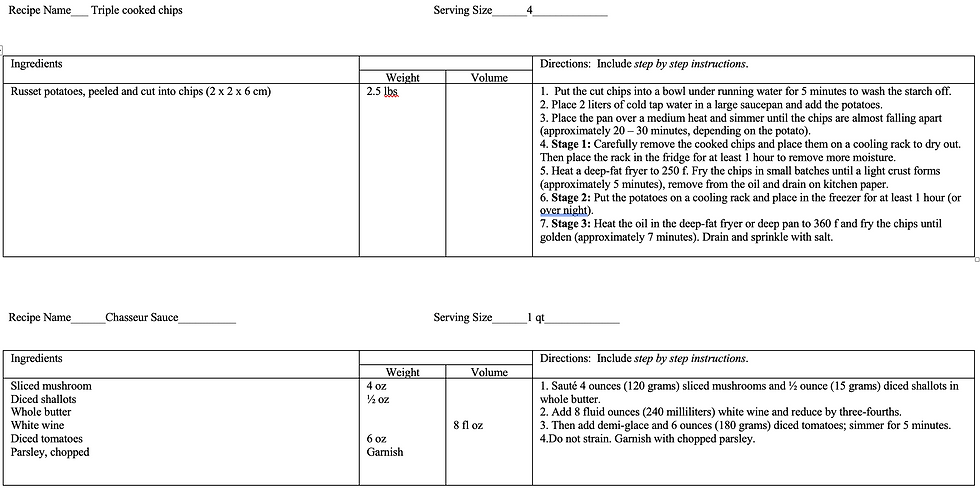
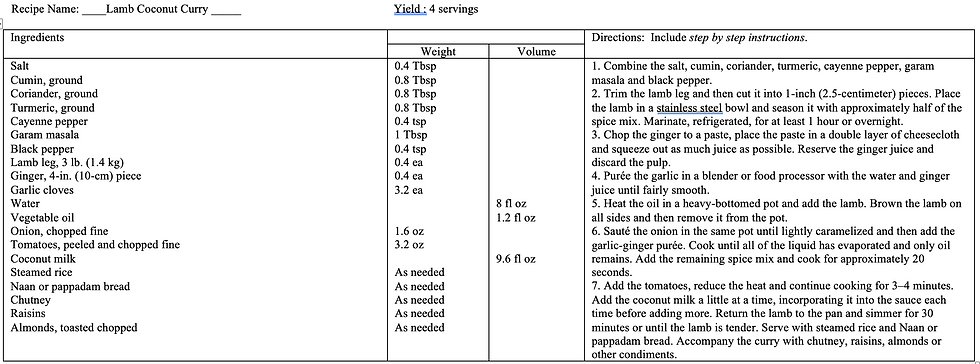

Comments